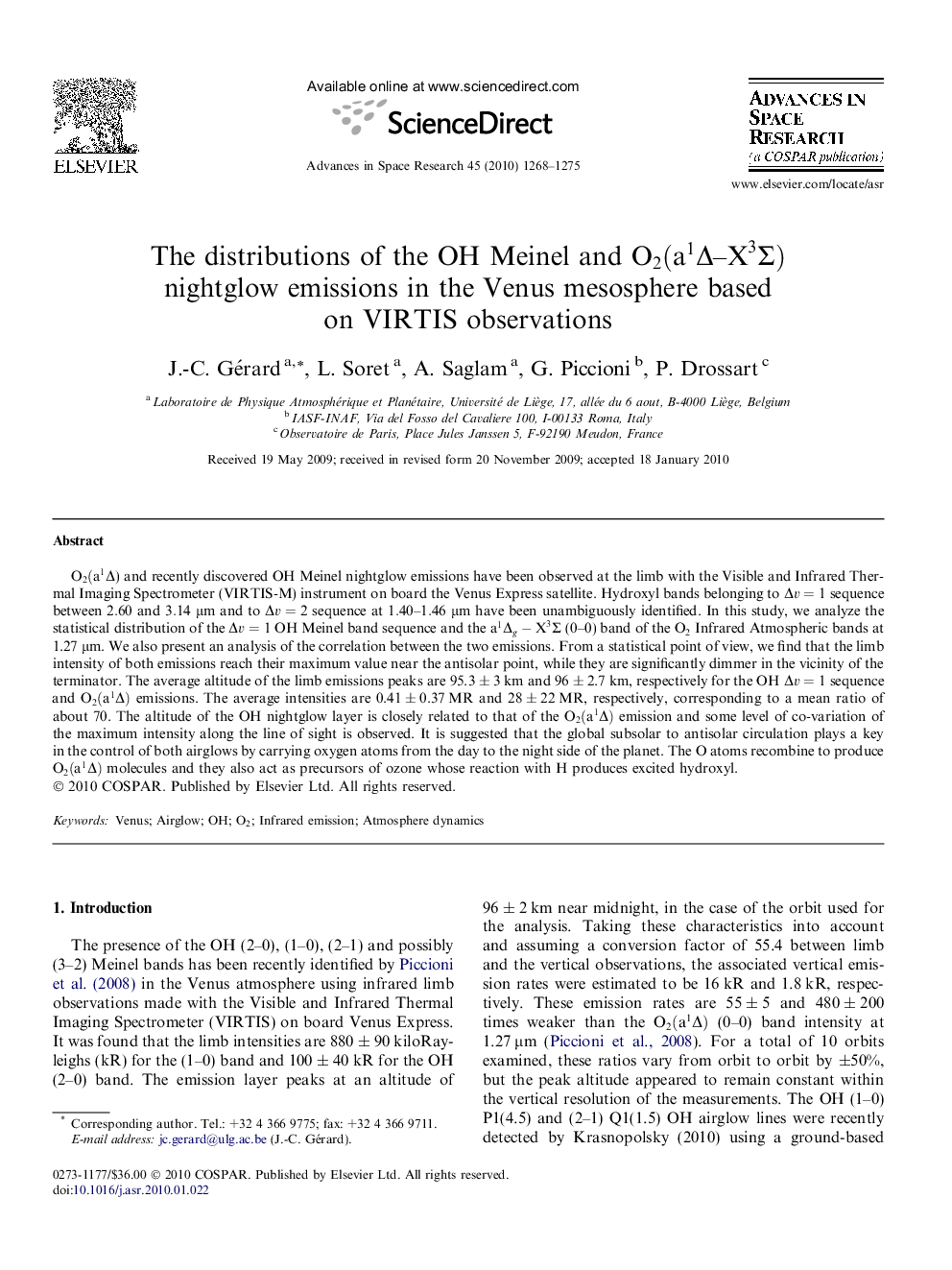| کد مقاله | کد نشریه | سال انتشار | مقاله انگلیسی | نسخه تمام متن |
|---|---|---|---|---|
| 1765528 | 1020105 | 2010 | 8 صفحه PDF | دانلود رایگان |

O2(a1ΔO2(a1Δ) and recently discovered OH Meinel nightglow emissions have been observed at the limb with the Visible and Infrared Thermal Imaging Spectrometer (VIRTIS-M) instrument on board the Venus Express satellite. Hydroxyl bands belonging to Δv=1Δv=1 sequence between 2.60and3.14μm and to Δv=2Δv=2 sequence at 1.40–1.46μm have been unambiguously identified. In this study, we analyze the statistical distribution of the Δv=1Δv=1 OH Meinel band sequence and the a1Δg-X3Σa1Δg-X3Σ (0–0) band of the O2O2 Infrared Atmospheric bands at 1.27 μm. We also present an analysis of the correlation between the two emissions. From a statistical point of view, we find that the limb intensity of both emissions reach their maximum value near the antisolar point, while they are significantly dimmer in the vicinity of the terminator. The average altitude of the limb emissions peaks are 95.3 ± 3 km and 96 ± 2.7 km, respectively for the OH Δv=1Δv=1 sequence and O2(a1Δ)O2(a1Δ) emissions. The average intensities are 0.41 ± 0.37 MR and 28 ± 22 MR, respectively, corresponding to a mean ratio of about 70. The altitude of the OH nightglow layer is closely related to that of the O2(a1Δ)O2(a1Δ) emission and some level of co-variation of the maximum intensity along the line of sight is observed. It is suggested that the global subsolar to antisolar circulation plays a key in the control of both airglows by carrying oxygen atoms from the day to the night side of the planet. The O atoms recombine to produce O2(a1Δ)O2(a1Δ) molecules and they also act as precursors of ozone whose reaction with H produces excited hydroxyl.
Journal: Advances in Space Research - Volume 45, Issue 10, 17 May 2010, Pages 1268–1275